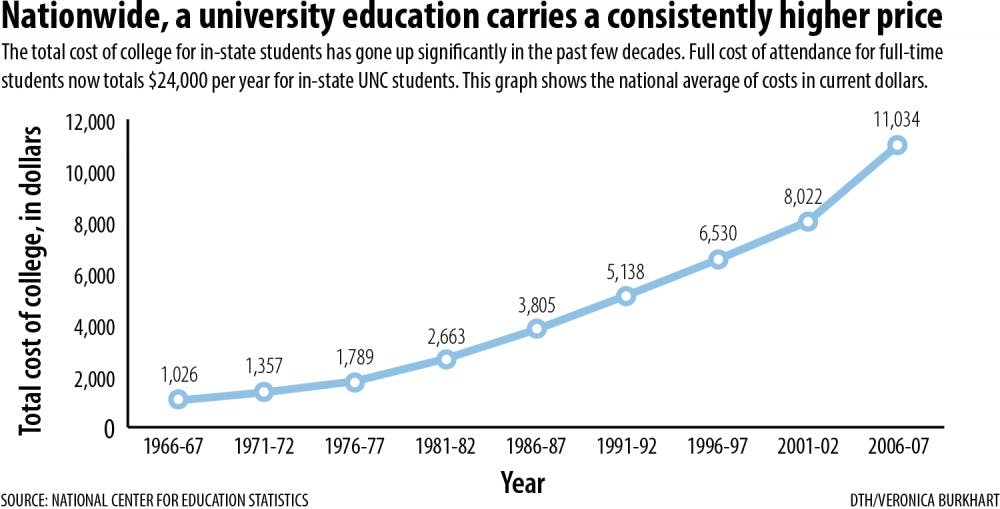About 50 years ago, it was normal for in-state students to attend a four-year public university for less than $1,100 a year in current dollars.
John Sanders, former director of the Institute of Government, graduated from UNC in 1950 and later served as a UNC-system administrator for many years, starting in 1962.
“In my earlier years here, I don’t recall that the undergraduate tuition was an issue,” he said. “The policy of the state was to keep tuition as low as feasible, and students were looked to as the providers of the additional margin of income.
“When I finished college and law school, I had no debt, and I think that was not as uncommon as it is today,” Sanders said.
In contrast, Mark Baucom, who attended UNC from 1982 to 1986, said he had to take out loans and participate in a work-study program while attending college.
“I worked in the Student Union about 12 to 14 hours a week. Of the 20 people I ran with, probably five of them worked on campus,” Baucom said.
The in-state cost of attending a four-year public university ranged from about $3,400 to $4,100 per year while Baucom was in college. Adjusted for inflation, the cost of his education likely totaled about $13,000 over the three and a half years he attended UNC.
“I lived in a suite with eight guys — my roommate had loans each year,” he said. “Even back then a lot of the students took out loans. The group I ran with, about 20 people, at least half of them had loans.”



